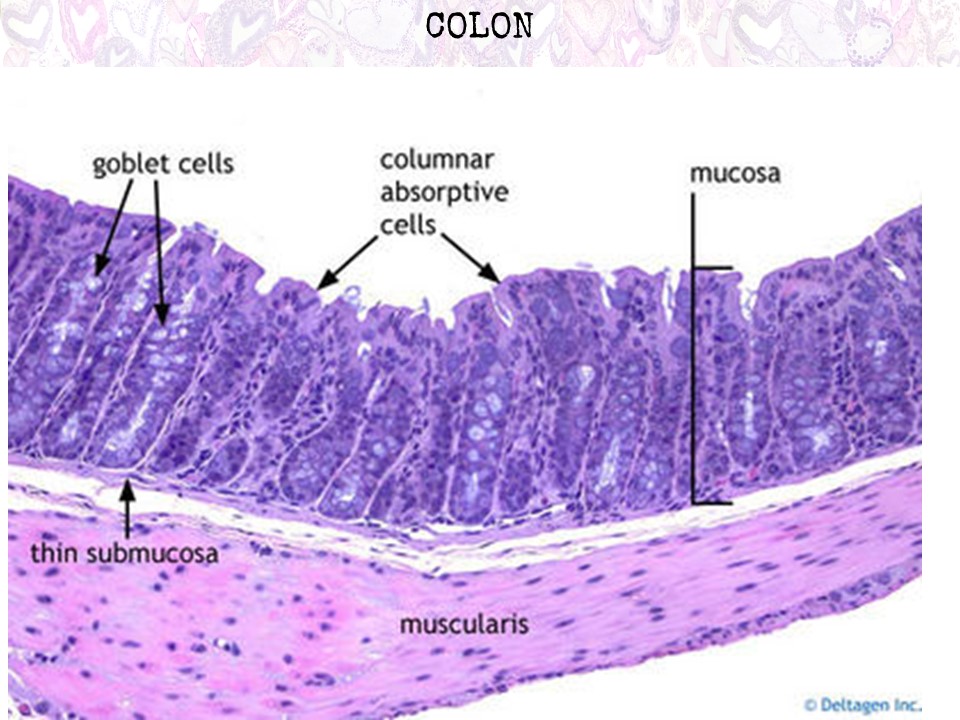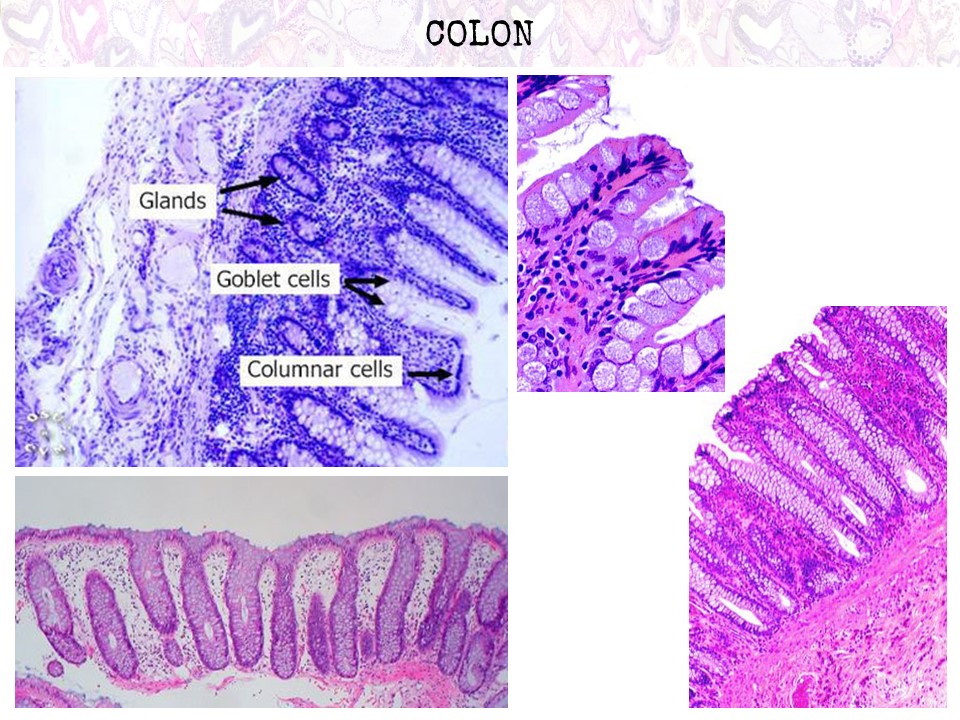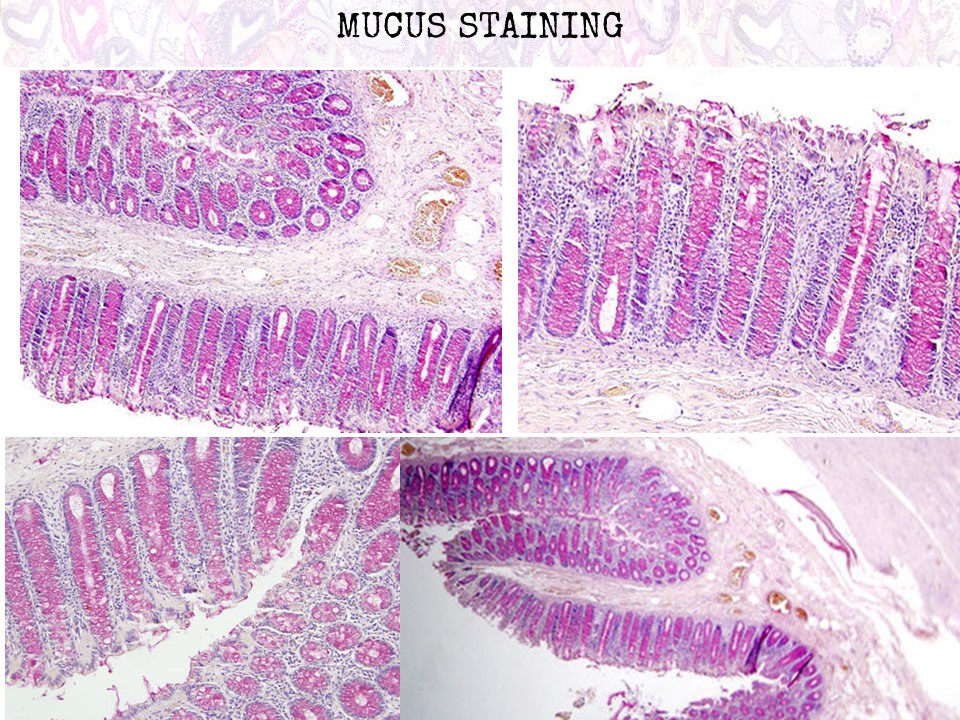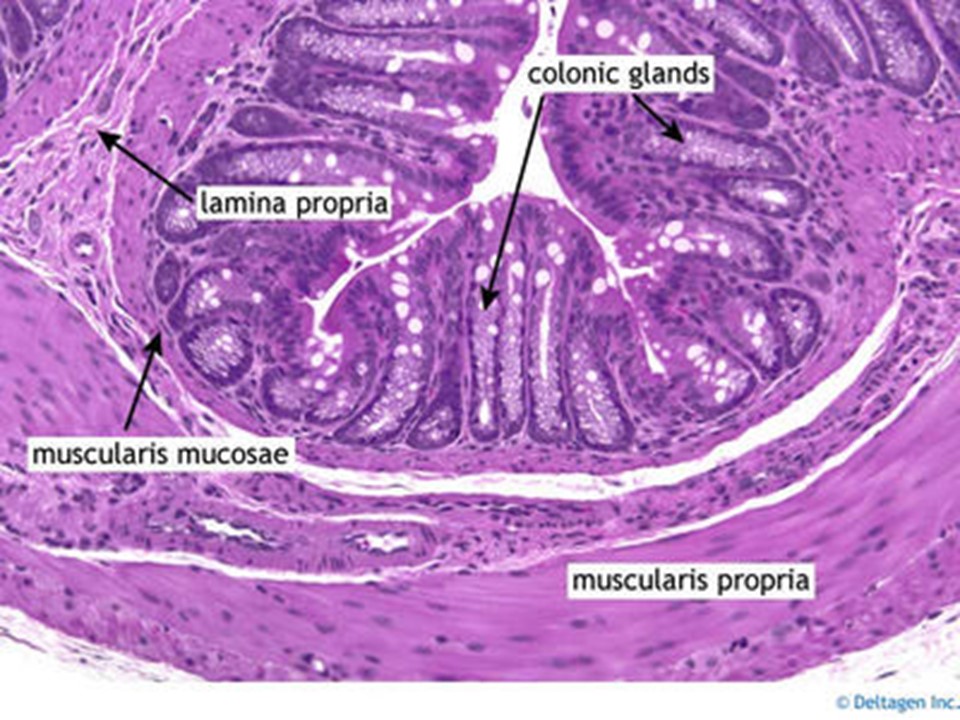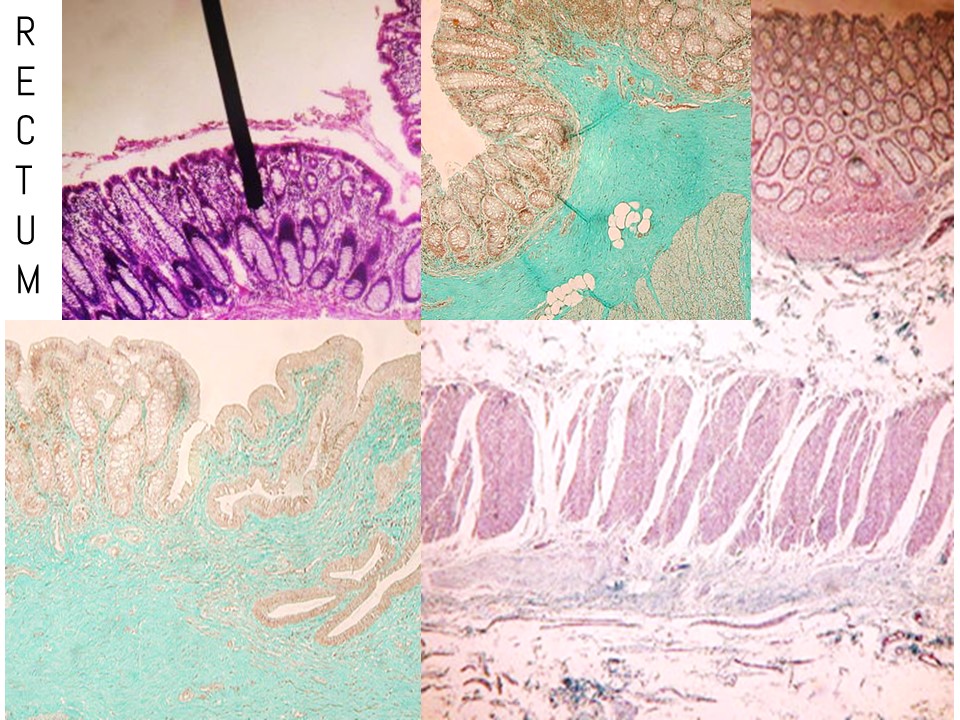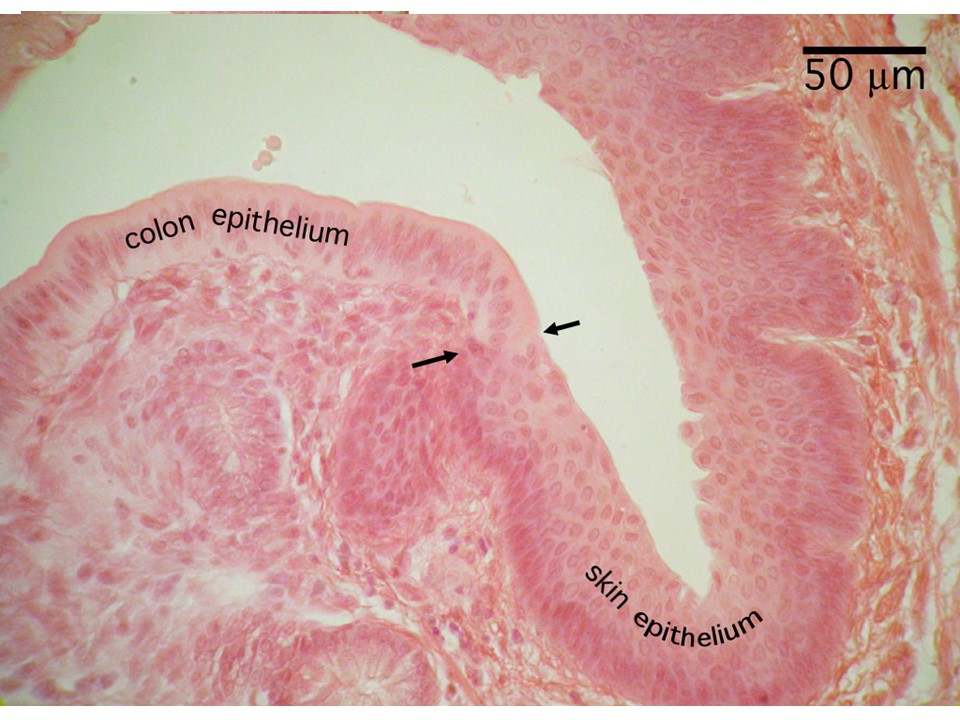This post contains many high yield images that help to identify some of the identifying features of the colon. The colon is 6 feet in length and divided into the cecum, ascending colon, descending colon, transverse colon, sigmoid colon and terminates in the rectum.
Functions of the Colon
Villi have absorptive function
Microvilli increase the surface area of absorption
Muscularis externa helps in churning food particles i.e peristalsis
Serosa is supportive and protective in function
Peyer's patches have an immunologic function
Histology
HELPFUL IDENTIFYING FEATURES:
Folds of mucosa without villi
Numerous goblet cells
Adipocytes in submucosa
Muscularis externa with outer longitudinal and inner circular muscle fibers

HISTOLOGY LAYERS(From the inner mucosal (luminal) surface to external surface)


MUCOSA ls lined by simple columnar epithelium rich in goblet cells; villi are absent.
LAMINA PROPRIA contain tubular intestinal glands or crypts of lieberkuhn (similar to the small intestines). but here crypts of lieberkuhn are devoid of paneth cells.
Crypts of lieberkuhn consists of following cells:
Stem cells: active, undifferentiated cells found at the base of lamina propria.
Goblet cells: secrete mucus.
Enteroendocrine cells: present above the stem cells. Also called as ‘argentaffin cells’ since they are stained by silver salts. Belong to APUD (amine precursor uptake decarboxylase) system.
NO PANETH CELLS: The cecum may still contain some Paneth cells, but seeing them in the left colon is a sign of chronic damage (colitis, infection etc). Similarly, inflammatory cells are more prominent in the right colon, but should not be as prominent in the left colon
MUSCULARIS MUCOSA/INTERNA this layer consists of circular muscle layers.
SUBMUCOSA made up of loose areolar connective tissue. Numerous adipocytes present.
MUSCULARIS EXTERNA consists of inner circular and outer longitudinal muscle fibers. In certain regions of the colon, the longitudinal muscle layers become very thick resulting in formation of three band like structures called ’taenia coli’.
SEROSA it is said to be incomplete in posterior aspect of ascending and descending colon. Here it shows many peritoneal pockets filled with adipose tissue and is termed as ‘appendices epiploicae’

Continue browsing through the high yield (or simply very pretty) images below to acquaint yourself with "normal" histology findings in the colon.
The Rectum & Anus
Now that you have familiarized yourself with the normal histology in the gastrointestinal tract, we can continue on to the various pathologic diseases that plague them! See the GI- Colon chapter for a complete list of topics covered.

















